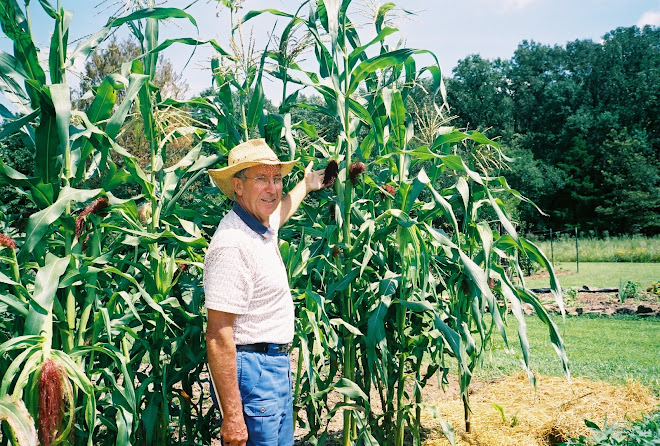Biochar is a fine-grained highly porous charcoal. It can be made from any organic material high in carbon, like wood, switch grass, or many others. It is produced by pyrolysis or gasification, essentially baking biomass in the absence of oxygen. Indigenous people often make charcoal by burning wood covered with a layer of soil.
Some time ago I read in National Geographic a very interesting story about the rich black, man-made soils that were discovered in Amazon Basin in Brazil. These 6-foot deep soils were called Terra Preta, meaning "dark earth" in Portuguese. They were unusual in that after several thousand years of heavy rainfall and continuous forest production, the soils were still deep, rich and productive. These soils were in sharp contrast to the soils on adjacent lands where the natural soils were acidic and depleted of minerals. That story left me with a one big question, "How could we recreate soils like that?"
For those keeping up with new agriculture developments, you know that the question has been addressed and the current interest in biochar is high. Although relatively few scientists are addressing associated issues, an international conference is planned for November. Interest has been prompted by those wanting to use biochar to increase soil productivity, and those looking for a way to reduce carbon dioxide levels in the air.
Those studying the original Terra Preta soils believe the indigenous people actually made low-temperature charcoal and added it to the soil. The carbon in biochar resists degradation and thus stays in the soil for centuries. As a rule we think of charcoal coming from wood. In reality, it can come from anything high in carbon, even chicken litter. That is why Tyson is interested in making biochar.
A series of early experiments have demonstrated that biochar does great things for the soil. It provides some nutrients, reduces leaching of nutrients, improves water holding capacity, increases microbial activity, moderates soil acidity, stimulates nitrogen fixation, and in the process increases plant growth. One article talks about it being effective to remove contaminants (heavy metals, pesticides, oil, etc) from the soil. Another dimension, which has not been addressed, is the fact that burned material has an increased paramagnetic value. Because of this, the soil microbes and the plants benefit from increased magnetic energy.
Like variability in compost quality that I wrote about last month, all biochar is not alike. The quality depends on the processes used in manufacture.
In short, I am excited to hear what is happening on this topic. It may or may not turn out to be practical. I have joined an International Biochar study group to keep posted on the subject. I will be looking for a supply of biochar and doing some testing and demonstrations. As this all develops, stay tuned. If you have extensive knowledge about the topic, outside contacts, and /or a keen interest, let me know.

